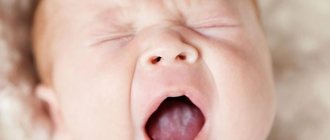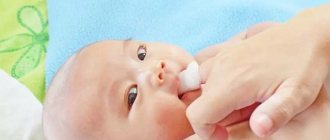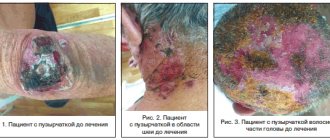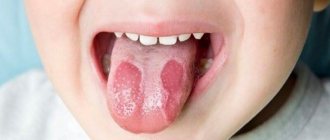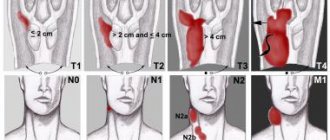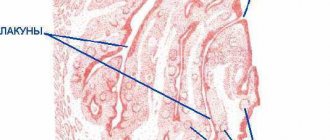Congenital pathology of the lip, in which the soft tissues do not fuse, is usually colloquially called a “cleft lip.” This name is given because the upper lip of hares consists of two halves that are not fused together.
The nature of the defect is the same as that of a cleft palate. But in the case of the latter, not only the soft tissues do not fuse, but also the bones of the palate. In half of the cases, facial tissues are not affected, and there is no cosmetic defect. In this case, it will only be a “cleft palate”.
Cleft palate and lip are scientifically called cheiloschisis. This congenital pathology occurs in the womb, usually in the first trimester of pregnancy. Under the influence of harmful factors, the development of the lip, palate and alveolar process is disrupted.
Children with a cleft lip may have not only external defects, but also serious deformation of the skull bones. Because of this, difficulties arise with nutrition and speech. But the pathology causes only physical problems - the intellect and psyche of such children are in perfect order.
Cleft lip without cleft palate is a milder pathology, since only soft tissue is affected and the bones are not deformed.
What is a cleft lip
Cleft palate and lip appear in a baby in the first months of development. This is when the jaw and face are formed. Normally, by the 11th week, the bones of the fetus's palate fuse, and then the soft palate forms. In 2 - 3 months, the upper lip is also formed, when the processes of the upper jaw and the median nasal process are finally fused.
The first months of pregnancy are the most important for the formation of the correct anatomy of the child. If during this period the embryo is influenced by negative factors from the outside, a failure may occur in the process of formation of bones and soft tissues, and a cleft lip may occur. The process is also influenced by genetic factors.
Photo: shutterstock.com
Causes of cleft lip in children
Cleft lip develops under the influence of “internal” and “external” causes. Hereditary factors, inferiority of germ cells, and early abortions can affect the development of the fetus.
No less dangerous are infections that a woman suffers in early pregnancy.
Chemicals, radiation, maternal consumption of drugs, alcohol or smoking have a detrimental effect on intrauterine development. Poor nutrition, vitamin deficiency, cold and heat, abdominal injuries, fetal hypoxia also affect the formation of the fetus.
The causes of the pathology are still being studied. The main ones are listed above, but in rare cases, cleft lip develops after birth. After trauma, infection, or removal of tumors, the palate and lips may be damaged.
Symptoms of cleft lip in children
A baby's cleft lip is usually detected before birth, on an ultrasound after the 12th week of pregnancy. Unfortunately, even with such early detection, nothing can be done before the baby arrives.
After birth, the baby has deformed lips, a nose, and possibly a cleft palate. The form and degree of pathology vary in severity - clefts are possible even on both sides. But more common is unilateral cleft palate and lip.
A baby with such a defect does not latch on well, often chokes, and breathes shallowly. He is prone to nasopharyngeal and ear infections due to frequent reflux of food through the cleft in this area.
Symptoms of rashes
A milk blister on the lip of a newborn can be confused with pathological rashes that require special treatment. The formation, associated with the way the baby feeds, looks like a small white or yellowish bead, reaching 0.5 cm in diameter and located in the center of the upper lip. The edging of the affected area merges with the skin.
The inflammatory element resulting from the entry of infectious agents into the body may have a gray, yellow or white color. The baby's oral cavity should be examined. The presence of plaque, blisters or ulcers in it indicates the presence of pathogenic bacteria. You should be alert if you notice the following symptoms:
- frequent regurgitation and gagging;
- problems with stool, changes in the smell, color and consistency of stool;
- apathy, tearfulness for no reason;
- refusal of food, malnutrition;
- a repulsive odor emanates from the mouth caused by the activity of pathogenic bacteria;
- high body temperature, sweating;
- redness of the skin, appearance of a rash;
- there are similar formations on the oral mucosa;
- increased salivation.
Treatment of cleft lip in children
It is important to understand that a cleft lip is often more than just a cosmetic problem. She will have to be treated in any case, and at a very early age. Otherwise, the child will not be able to suck, swallow food correctly, and sometimes even feeding through a tube is required.
Without treatment of the defect, the bite is formed incorrectly and speech is impaired. A cleft palate disrupts the timbre of the voice; children pronounce sounds poorly and speak “through the nose.” Even a cleft in only soft tissues will interfere with speech production. Frequent inflammation in the nasal cavity and ears due to reflux of food leads to hearing loss.
After the diagnosis is made, a decision is made about surgery - there are no other ways to help the child. The age at which the baby will be operated on is determined by the doctor. If the defect is too dangerous, the first operation is possible in the first month of life. Usually it is postponed until 5 - 6 months.
Treatment consists of several stages, so surgery alone will not work. Before the age of 3, the baby will have to undergo 2 to 6 operations. But as a result, only a barely noticeable scar and possibly slight asymmetry of the lips will remain. All other problems will be behind you.
Diagnostics
The first diagnosis of cleft lip is carried out inside the womb using ultrasound. After the birth of such a child, a doctor examines the severity of the pathology. It determines how much the defect prevents the baby from eating, and whether there are breathing problems.
They resort to the help of other specialists: otolaryngologist, dentist, infectious disease specialist. Next, general blood and urine tests, blood biochemistry, and x-rays of the maxillofacial area are prescribed. The baby's reaction to sounds and smells is checked - this is how hearing, smell, and facial expressions are assessed.
Photo: @mart.production, pexels.com
Modern methods of treatment
Plastic surgery is used to eliminate the cleft lip defect. Doctors of various profiles will be involved in multi-stage treatment. Before surgery, the child often wears an obturator, a device that serves as a barrier between the nasal and oral cavities. This prevents the reflux of food, helps to breathe and talk normally.
For a small defect, isolated cheiloplasty is used - the skin, tissue, muscle and mucous layers of the lips are sewn together. If the nose is affected, rhinocheiloplasty is performed, correcting the nasal cartilage. Rhinognathocheiloplasty forms the muscular frame of the mouth area.
Cleft palate is treated with uranoplasty. Unlike previous operations, it is performed quite late - by 3 or even 5 years. Early intervention may harm jaw growth.
Additional reconstructive surgeries are needed to remove scars and improve speech and aesthetics.
In addition to surgical treatment, the child needs the help of a speech therapist, since it is more difficult for such children to pronounce sounds correctly than for others. The otolaryngologist makes sure that the baby’s hearing is not damaged and breathing is normal. If teeth grow abnormally, the orthodontist installs braces.
Constant oxygen deprivation due to shallow breathing, poor weight gain and frequent infections can lead to a sickly appearance and stunted growth.
The help of a psychologist will be no less important, since due to their characteristics, children with a cleft lip experience difficulties in adaptation. Despite the fact that the mind of such children is in perfect order, they may still lag behind in development. Due to psychological problems, reluctance to study due to bullying by peers, problems arise in learning. Difficulties in pronouncing words can also interfere with a full life. Therefore, it is better to complete all stages of treatment before school age.
Preventive measures
The likelihood of a callus forming on the upper lip of a newborn can be reduced by following feeding rules . You must adhere to the following recommendations:
- If the baby falls asleep while sucking, you need to take him off the breast by gently pressing his chin and put him in his crib.
- With good lactation, a feeding session should not last more than 20 minutes. To normalize milk flow, you need to drink more liquid. 10-15 minutes before feeding the baby, you should drink a glass of warm fruit compote, rosehip decoction or weak tea with milk.
- The baby should grasp not only the nipple, but also the areola with his mouth. To do this, you need to hold the baby so that his face is at the level of the breast. If the grip is incorrect, the position of the chest should be corrected.
- If there are no problems with lactation, pediatricians recommend breastfeeding babies for at least six months so that their delicate skin is not damaged. If your lips are rubbed with a pacifier, you need to make sure that its hole is not clogged with lumps of the mixture. The softest attachments are made of latex and silicone.
- With artificial feeding, the risk of overfeeding the baby is increased. It is impossible to feed a child with formula milk in unlimited quantities, not only because of the risk of callus formation, but also because the finished powder is saturated with vitamin supplements and vegetable fats, which must be supplied to the child’s body in a volume appropriate to his age and body weight.
Prevention of cleft lip in children at home
It is quite difficult to avoid such a problem. If such a pathology has been observed in the family, you can consult a geneticist to find out the likelihood of having a baby with a cleft lip.
It is important to take special care of yourself in the first weeks of pregnancy - avoid infections, injuries, and eat well. As a preventative measure, pregnant women take folic acid.
It is necessary to detect the problem as early as possible, even in the womb. Since cleft palate and lip may cause additional complications during childbirth, your doctor should be aware. During childbirth, the risk of amniotic fluid entering the baby's respiratory tract increases.
After the birth of a child with a cleft lip, you need to conduct a full diagnosis, consult with specialists and assess the severity of the pathology. If doctors insist on early surgery, it means that the baby really needs it.
The first months and years of such a child’s life will be difficult, feeding will be difficult and parents need to be prepared for this. But do not forget that after all stages of treatment the child will be completely healthy and the problem will be left behind.
Popular questions and answers
The pediatrician remains the main doctor for a child with a cleft lip - he prescribes additional examinations and refers to specialists. Pediatrician Daria Shchukina will tell you more about this pathology .
What complications can there be with a cleft lip?
Without treatment, the child's speech will be impaired, even if the palate is not affected. If the cleft lip is severe, there will also be difficulty sucking.
When to call a doctor at home for a cleft lip?
When a child has ARVI or similar diseases. In emergency cases, you need to call an ambulance. Treatment of cleft lip is planned; in case of such a pathology, there is no need to call a doctor at home. Are cleft palate and cleft lip the same thing? Why then are they called differently? Not really. Indeed, both diseases are congenital. A cleft lip is a cleft and a defect in the soft tissues of the lip, and a cleft palate is a cleft palate where there is communication between the oral cavity and the nasal cavity. However, they are often combined, and then the child will have both an external and internal defect. Moreover, there is a possibility of developmental defects in other organs and systems.
At what age should surgery be performed so that it is not too late?
There is no consensus on this matter. Optimally - before speech formation begins, but in general - the earlier, the better. Cleft lips can be corrected from the first days of life, or in a hospital setting in 3-4 months, sometimes also in several stages.
Cleft lip and palate are no longer a death sentence
Simply put, this anatomical defect, due to its similarity with the structure of the corresponding organs in the hare and wolf, is strictly designated as “cleft lip” and “cleft palate.” In medicine it is called cleft lip and palate. Even in the middle of the last century, such a purely external disorder represented an almost insurmountable barrier to the normal development of a child, including speech. Now such problems have already been solved. The main thing is to seek help from the appropriate specialists as early as possible.
FROM THE FIRST DAYS OF LIFE
As a rule, the expectant mother learns that a child will be born with a cleft lip and palate at 16-20 weeks of pregnancy during a screening ultrasound. Heredity affects only 15-20% of cases. The rest is due to infectious diseases, stress and toxicosis that the woman suffered in the first two months of pregnancy, when the maxillofacial skeleton is formed. It is useless to look for reasons and those to blame. It is better to immediately contact pediatric maxillofacial surgeons, send pictures and ultrasound results by email, and keep in touch with specialists by sending pictures of the next ultrasound scans.
The baby, if there are no other problems, will be born in a regular maternity hospital. You need to take a photo of what the defect looks like and send it to the doctor. In the vast majority of cases, the operation is performed when the child is 2-4 months old. Mother and child face a difficult period: due to an anatomical defect, the newborn does not eat well, cannot swallow and suck fully, in order to feed him, he has to use special bottles and nipples.
Breastfeeding is difficult to maintain under such conditions.
But, if surgery takes place within the first month of life, many problems can be avoided. True, this requires specialists who are familiar with the technique of operations on newborns and the appropriate equipment. In the Moscow Children's City Hospital No. 9 named after G.N. Speransky, all conditions came together in 2011. And for the eighth year now, specialists from the First Moscow State Medical University named after I.M. have been at its base. Sechenov operates on newborns with cleft lip and palate.
The youngest patient was only 3 days old. The baby can suckle at the breast the very next day after surgery. On the 6-7th day, mother and child are discharged home.
TO BE CONTINUED
Parents need to be prepared for the fact that the baby will undergo multi-stage treatment with the participation of many specialists. Neonatologists, anesthesiologists and maxillofacial surgeons prepare a newborn for surgery, and, if necessary, orthodontists. After surgery, a small scar remains. It usually takes six months to heal.
At 6-8 months, surgery to correct the palate is performed. It is important to do it before the baby begins to master the first syllables. At 2-2.5 years, if necessary, correction of the lip and nose is carried out, at 4-4.5 years, the alveolar process defect is eliminated. All this time, the child’s development is closely monitored by a pediatrician, neurologist, maxillofacial surgeon and psychologist. When the baby begins to master speech, a speech therapist is involved. An orthodontist monitors the baby's jaw development. The same specialist, if necessary, straightens the teeth, corrects the primary and then the permanent bite. If teeth need to be restored (children with cleft lip and palate sometimes have two missing upper front teeth), an orthopedic dentist is involved. In total, 10-15 specialists are involved in the treatment. Thanks to their efforts, the main problems are solved before school. In adolescence, if necessary and desired by the teenager, minor cosmetic problems remaining after operations are eliminated.
***
AN EXPERT IS HERE TO HELP YOU
Adil Mamedov
,
dentist, honored doctor of the Russian Federation, laureate of the international humanitarian award ICPF, doctor of medical sciences, professor, head. Department of Pediatric Dentistry and Orthodontics of the First Moscow State Medical University named after I.M. Sechenov
***
Operations to eliminate cleft lip and palate are carried out at the expense of the compulsory health insurance fund, that is, they are free for the baby’s parents.
For treatment in the appropriate clinic, you need to receive a referral in form 057u and pass the necessary tests.
***
A cleft lip and palate is only a physical defect. It does not affect mental health and mental abilities. Among the people born with this feature, there are famous scientists, great athletes, and famous musicians.
Source: Happy Parents
